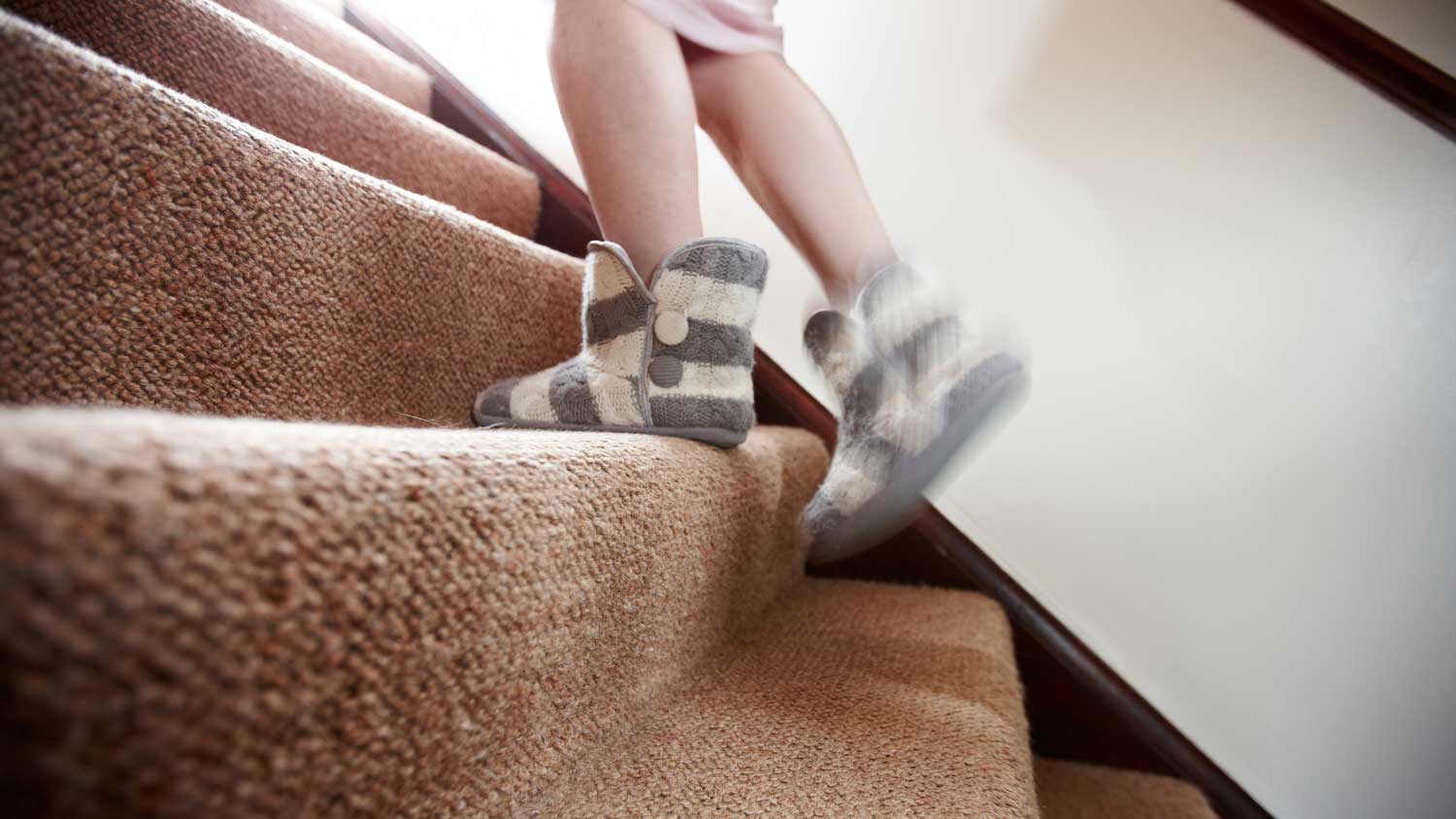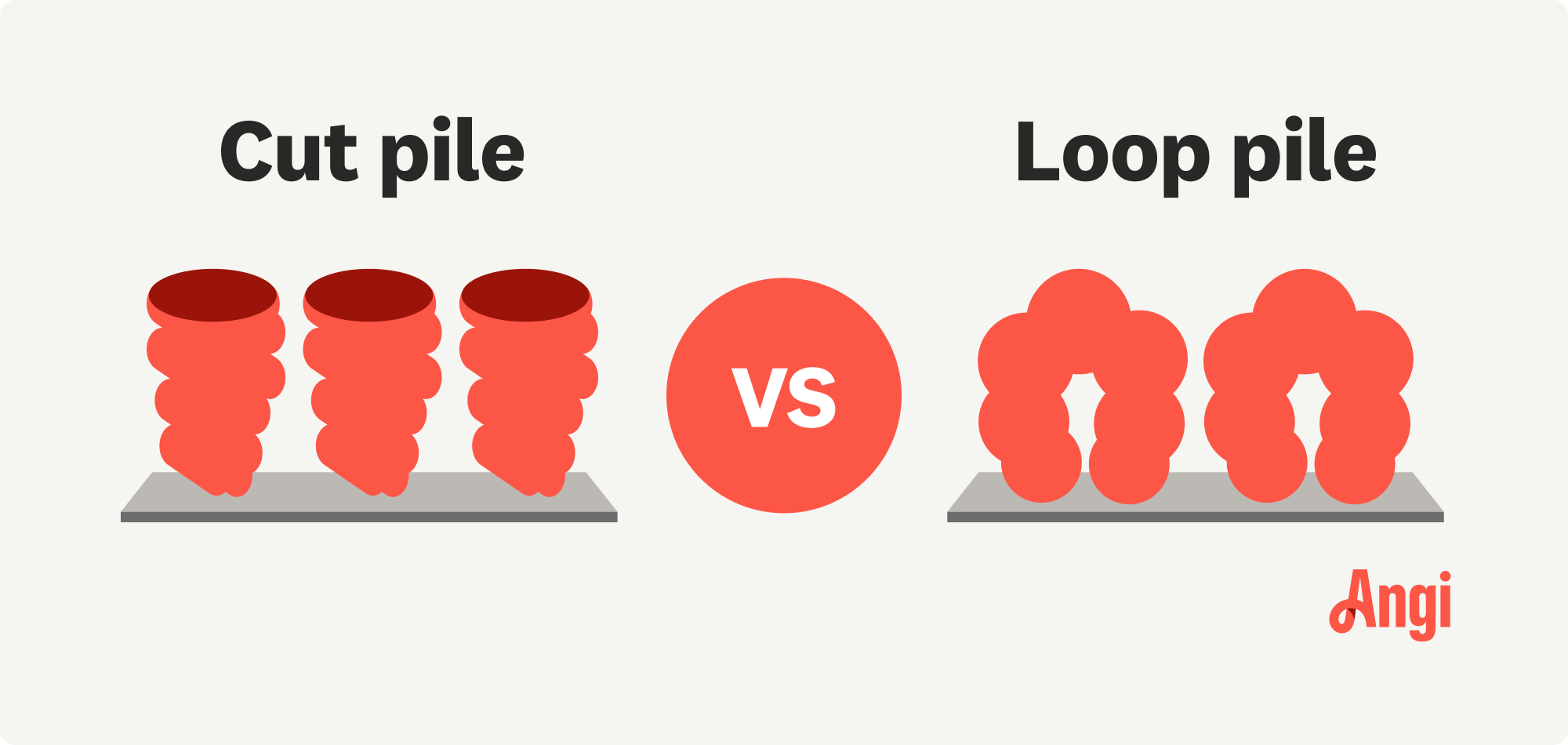How to Choose the Best Carpet for Stairs
Find out which carpets hold up to the wear and tear on stairs


Carpet is arguably better for stairs than other flooring materials, providing better traction and cushioning.
Due to their high durability, wool and nylon are the best carpets for stairs.
Polyester and olefin are soft but not durable enough, while Triexta isn’t as tested.
Carpets with loop pile and medium to low thickness are best for stairs.
High-density carpets and pads are often higher quality but will be more expensive.
Stairs are one of the most important things to consider when building or remodeling, as they connect the different levels of your home. Plus, a showstopping staircase can make a statement. Because stairs are one of the most used parts of your home, carpet is an excellent choice. However, some carpets hold up better than others. Read on to learn about the best carpet for stairs for a beautiful look that will last.
1. Best Carpet Fiber for Steps

Knowing how to choose carpet for high-traffic areas is crucial when deciding on carpet for your stairs. There are two major forms of carpet fibers: synthetic fibers and natural fibers.
| Synthetic Fiber | Natural Fiber |
|---|---|
| Polyester, polypropylene, Triexta, and nylon | Silk, cotton, seagrass, and wool |
| More common | Not as common |
| Less expensive | More expensive |
| Durable | Less durable |
| Stain-resistant | Softer |
When it comes to standard flooring and flooring on stairs, synthetic fibers are the most common. These include polyester, polypropylene, Triexta, and nylon. Synthetic fibers are less expensive, more durable, more stain-resistant, and require lower maintenance than natural ones.
Natural fibers, including silk, cotton, seagrass, and more, aren't as common as artificial fibers for floor installations. They are more expensive and less durable than synthetic options, making them more conducive for rugs. Wool is the major exception since it’s one of the most durable materials on the market.
While durable flooring options may cost more, consider the wear and tear your floor will withstand in high-traffic areas, especially in homes with children and pets. If you’d like help choosing a material, a flooring pro can recommend strong materials that will look great in your home.
2. Best Carpet Construction for Stairs

Once you decide on the type of carpet for your stairs, the next thing you’ll want to consider is its construction. There are many aspects to consider, including pile, thickness, density, and backing.
Pile

The carpet pile is the shape of the carpet fiber, which comes in one of two forms:
Cut pile: This pile is cut so the individual strands of fiber stick out, much like cut grass. It’s incredibly soft, but it’s also less durable than a loop pile.
Loop pile: Threads loop and tie into the backing of the carpet, making the strands look like loops. It's a little less comfortable, but it's more durable than a cut pile. A loop pile carpet is better for carpet installation on stairs.
One of the most common options for carpeted stairs is a loop-pile carpet called Berber carpet. Loop-pile Berber carpet is an incredibly dense carpet with tight loops. However, a common problem with loop-pile carpets and Berbers is that your pets' nails or furniture can snag onto one of the loops. If it's a lower-quality carpet, then a snag can cause it to unravel. Higher-quality carpets are often anti-snag and won’t unravel as easily.
Thickness and Density
Thickness is determined by the height of the pile. Carpets with a medium to low thickness are more durable and have better traction for your stairs while still looking good.
You want a pile thickness between 1/4 and 1/2 inch for stairs, as carpet that's too thin often doesn’t look as good and withstand high traffic as well.
Density refers to the closeness of the yarn and is determined by two separate indicators:
The ounces of fiber per square yard, known as face weight
How compact the pile is, determined by tufted rows per inch
Higher-density carpets are higher quality and better for high-traffic zones. This also means they are more difficult to install, and the cost of carpet installation is higher, along with the already higher cost of the material.
For stairs, you want at least five to seven tufted rows per inch with a face weight of at least 35 ounces, though preferably higher if you can fit it into your budget.
Backing
Even something as seemingly innocuous as carpet backing can affect the material’s effectiveness on stairs. The two most common types are action backing and felt backing.
Action backing: This backing consists of synthetic jute, and it’s easier to install. While it’s rough and rigid, it’s not very strong. You’ll most commonly find it on low- to medium-quality carpets, and it’s not the best option for stairs.
Felt backing: This backing consists of very soft and strong felt, and it’s harder to install. You’ll find it on higher-quality carpets, and it’s a better option for stairs.
If you’re able to find a higher-quality carpet, you may be able to use a jute-backed carpet. The jute plant forms a natural, woven backing for carpet. This traditional method of making carpet produces a soft and durable backing, making it an ideal option for stairs.
Blue-backed carpets have also been growing in popularity since they can protect against moisture, spills, and messes.
Additional Tips for Choosing Carpet for a Staircase
With the fiber and construction of the carpet decided, there are still a few additional things to consider before deciding which carpet is the best to install on your staircase.
1. Choose the Padding Thickness Wisely
An additional layer of cushion under the carpet is also important, which is what a carpet pad is for. At the very least, you want to use a six-pound pad, though it’s often the go-to for inexpensive carpet. If you can budget for it, it may be best to go for a heavier pad, which can range from eight to 10 pounds. It's easier to tell the difference between the lighter and heavier pads, though both heavy pads feel about the same.
The heavier it is, the more dense the pad is, which makes it more firm and durable. However, you also don’t want your pad to be too thick, which can make it more squishy. Most padding is 1/2 inch thick, which is around the ideal thickness for carpet on stairs.
As for the material, the relatively inexpensive option is a rebond pad, which is made from a hodgepodge of soft materials. If you want a higher-quality pad, you may want to invest in a heavier foam pad or even the extremely heavy 20-pound rubber pad.
2. Choose a Color That Hides Dirt and Stains
The best color to use on stairs is a neutral or speckled color that will hide dirt and stains. Light-colored carpet, especially in busy areas, will start to wear down a lot faster and can look dirty over time. Dark-colored carpet, while it will hide wear and tear, will show lint and eventually look like snow on a black jacket. However, the most important factor to consider is whether your stairs will match the rest of the carpet in your home.
3. Seek Professional Advice
If you’re still scratching your head, reach out to a local carpet installer. A carpet pro can point you toward a balance of what will work best for the space and the color and look you’re aiming for. Plus, having a pro install the carpet on your stairs will give you the best and longest-lasting results.
How Much Does It Cost to Install Carpet on Stairs?
It costs $650 on average to carpet a staircase, with a standard range between $400 and $800. Several factors dictate the overall cost, including the number of stairs, the shape of the staircase, and the type of material used. There are also additional costs to consider, like whether old carpet needs to be removed, whether spindles connect the handrail to the staircase, and whether you elect to carpet the staircase’s landing area. Due to these numerous price differences, some staircases cost over $2,000 to carpet, but that tends to be the exception rather than the norm.
DIY vs. Hiring a Pro
Like most home projects, it’s cheaper to carpet a staircase yourself than to hire a pro for the job. However, the savings aren’t massive. On average, DIY carpeting costs between $400 and $1,200. This figure is higher than most DIY tasks because of the many tools needed for the job, as well as the price of the carpet itself. Carpeting a staircase is also tedious and complex work that you want to get right the first time, so we recommend hiring a professional carpet installer in your area.
Frequently Asked Questions
Installing carpet on stairs involves a lot more cutting, tucking, tack strips, and time. The shape of your staircase, along with the material and construction of the carpet you’re installing, will also increase the cost. Carpet installation on stairs will cost $400 to $800 in total, but it can go as high as $2,500 for difficult staircases, such as wrap-around, upholstered, or spiral staircases.
Decent carpet will last around 10 years on stairs. Some less durable carpets, like polyester, will only last five years on stairs. The ideal carpet, like wool or nylon, can last about 15 to 25 years. You’ll know when to replace it when it starts wearing down. You may have to replace it sooner if it's stained, whether due to water damage or pets.
A stair runner is a length of carpet installed in the center of the staircase, either on top of or in between hard materials installed on the staircase. The carpet doesn’t cover the entire length of the steps, making stair runners an aesthetic choice. Thankfully, if you want hard materials on your stairs to show through, a stair runner will make it safer, as the primary area you walk on will be less slippery thanks to the carpet.





- How Long Does Carpet Last? 7 Signs You Need to Replace It
- What Is the Best Carpet for Bedrooms and How Do You Choose One?
- When Is the Best Time to Buy Carpet and Save on Your Installation?
- How Long Does It Take to Install Carpet?
- How to Disinfect Carpet: Facts, Myths, and What You Can Do Yourself
- What Is Low-Pile Carpet? Is It the Right Choice for Your Home?
- How to Fix Matted Carpet and Prevent Future Flattening
- Carpet Tiles vs. Carpet: Which One Will Floor You?
- How to Get Stubborn Stains Out of Your Carpet
- Everything You Need to Know About Carpet Padding, From Cost to Benefits

 - Derek Rose.png?impolicy=thumbnail)









